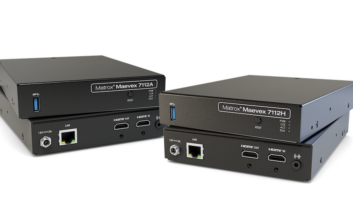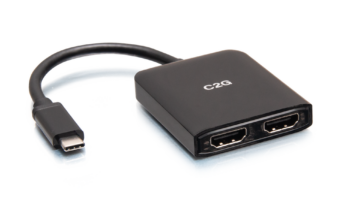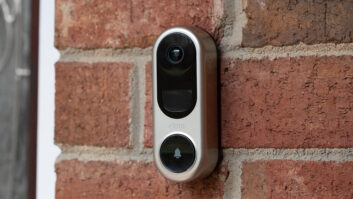Beverly Hills, Calif. – The launch of high-definition blue-laser optical disc formats has been a disappointment. That was the consensus of a panel of mostly specialty A/V consumer electronics retailers speaking at the DisplaySearch HDTV Conference here, Tuesday.
“This whole HD or high-definition DVD is probably the worst execution of a new technology release this industry has done,” said David Workman, PRO Buying Group executive director. He cited software glitches, a format war, future compatibility issues with the delivery of the HDMI version 1.3 spec “right around the corner,” and a hasty push to get players into the market, for pouring water on early efforts to seed the HD disc market.
“We’ve stacked this thing up as far as you can to try and create a failure for what should have been the best new technology introduction,” he continued. “As an industry there are so many competing technologies out there for consumers’ share of wallet and discretionary income, we have to do a better job on this one. It’s been a race to see who can string the tightest noose,” Workman quipped.
He said that some more recent titles have looked more promising, adding that “with the right content we can move more product.”
Casey Crane, CEO of Southern California A/V chain Ken Crane’s, attributed the sputtering launch to sub-par title releases in the Blu-ray format making for weak demonstration material and less-than-spectacular picture quality.
“The source material is not what it could be,” Crane offered. “The future will be strong for 1,080p DVD. The consumer does want it, but their expectations are higher than what we are delivering.”
Bjorn Dybdahl, president of the San Antonio, Texas A/V specialty store Bjorn’s, said he was “somewhat disappointed” in the launch of the Blu-ray Disc and HD DVD formats thus far, also citing below-par software encoding in early Blu-ray releases for dampening the enthusiasm among salespeople and consumers alike.
“Sales have not been anywhere near what I thought they would be for this new category,” Dybdahl said, adding that many early Blu-ray Disc releases appear only marginally better than standard DVDs. He later offered that HD DVD software, which is output in 1,080i format and not the 1,080p purported to be output from Samsung’s Blu-ray Disc player, had looked better than most Blu-ray Disc releases.
Dybdahl said a Samsung demo disc, which offered material encoded in high quality, showed the true potential of the format and the player, and the imperfections of the early movie discs.
To complicate the issue, Dybdahl said salespeople are “becoming lazy and are not demonstrating the material over and over and over again.”
Jim Pearse, Ultimate Electronics senior merchandising VP, agreed that the HD disc introductions have been “disappointing” thus far, adding that “it will be a 2007 product as more manufacturers bring it to market.”
Countering the testimony from the specialty dealers, Noah Herschman, Amazon’s A/V for the Americas director, said the e-commerce retailers has done very well with sales of both blue-laser format players and software.
Mark Knox, a technology evangelist for the HD DVD Promotions Group, said the apparent disparity in picture quality between early Blu-ray and HD DVD titles can be attributed to a decision by most Blu-ray backing studios to encode titles in the MPEG-2 compression format — instead of the VC-1 or MPEG-4 formats used for many HD DVD titles — on 25GB single-layer media. He offered that additional problems could be related to firmware issues in early releases of the Samsung Blu-ray players — the only Blu-ray Disc player currently on the market.
Knox said studios including Disney are starting to encode Blu-ray titles in MPEG-4, and the picture quality advantage HD DVD has enjoyed thus far, may be short lived.
Meanwhile, Ross Young, DisplaySearch president, said his company’s parent, The NPD Group, recently conducted a survey of 2,000 consumers, showing growing awareness of HDTV.
He said that among people planning to buy a TV, 63 percent wanted an HDTV-ready set, second only to large screen size (68 percent), according to DisplaySearch research.
Young said that HDTV will be a popular commodity with most consumer segments by the end of the decade. DisplaySearch forecasts North American HDTV shipments, which now account for 51 percent of all sets sold to dealers, to reach 90 percent market share by 2010.
However, Young said 40 percent of those polled in the NPD survey were not clear on HD’s benefits. Another 23 percent said that they wanted HD, but it wasn’t a top priority, and another 23 percent felt that HDTVs were still too expensive.
The survey also found that 81 percent of all dollar revenues for TV sales in June were from HDTVs, compared with 59 percent a year earlier. In the same time period, the average cost of an HDTV set fell from $2,223 to $1,893, DisplaySearch, Young said.
Continued price cuts have been “very helpful” to the success of HDTV sales to date, he continued. “You were able to buy an eight-inch larger set in 2006 than in 2005 at 720p and in the case of 55 to 56 inches you were able to get double the amount of pixels at a lower price.”
He said 50-inch plasma TV prices were down “37 percent to slightly above $3,000, while 37-inch LCD TV prices are down 50 percent and 32-inch LCD TV is down $1,300 and will soon be at $999. In warehouse clubs it is already at $799 and we will see it at $699 for Christmas.”
DisplaySearch expects to see 26-inch HD sets for below $500, 32-inch sets for below $700 in national chains, 37-inch below $900, 40-inch below $1,000 for an HD set and 40-inch 1,080p for slightly above $1,000, Young said.












